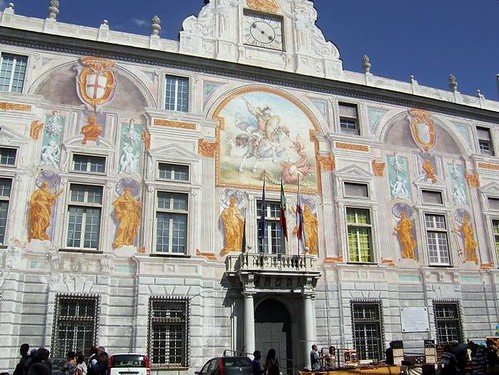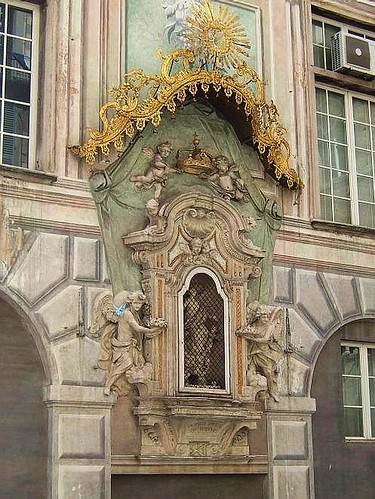Located in the heart of Genoa’s Old Port, Palazzo San Giorgio is one of the city’s most historically significant buildings. Dating back to 1260, this striking structure has served as a government seat, a powerful financial hub, and even a prison that once held the legendary Marco Polo.

A Palace Built for Power
Palazzo San Giorgio was commissioned by Guglielmo Boccanegra, the uncle of Simone Boccanegra, Genoa’s first Doge. The palace was meant to showcase Genoa’s influence as a rising maritime power in the 13th century.
In the early 15th century, it became the seat of the Banca di San Giorgio, one of Europe’s first public banks, which managed the finances of the Republic of Genoa and played a major role in the city’s commercial expansion.

Marco Polo’s Imprisonment and “The Travels”
One of the palace’s most intriguing chapters is linked to Marco Polo. In the late 13th century, part of the building was used as a prison. According to tradition, it was here that Marco Polo was imprisoned after being captured during a naval battle between Venice and Genoa.
During his imprisonment, he dictated the stories of his travels along the Silk Road to his fellow inmate, Rustichello da Pisa, who turned the tales into the famous book, "The Travels of Marco Polo."

Palazzo San Giorgio Today
Today, the Palazzo San Giorgio serves as the headquarters of the Port Authority of Genoa (since 1904) and remains a symbol of Genoa’s rich maritime legacy. With its ornate frescoed façade, Gothic architecture, and deep historical layers, it’s a must-see stop for anyone exploring the city.
